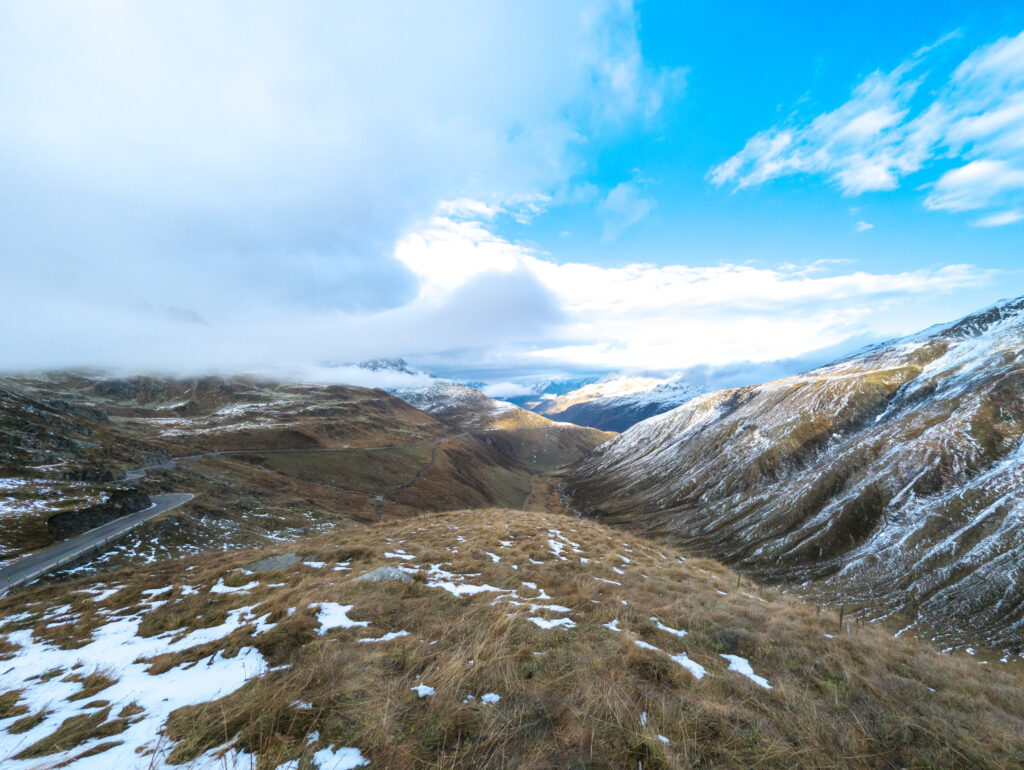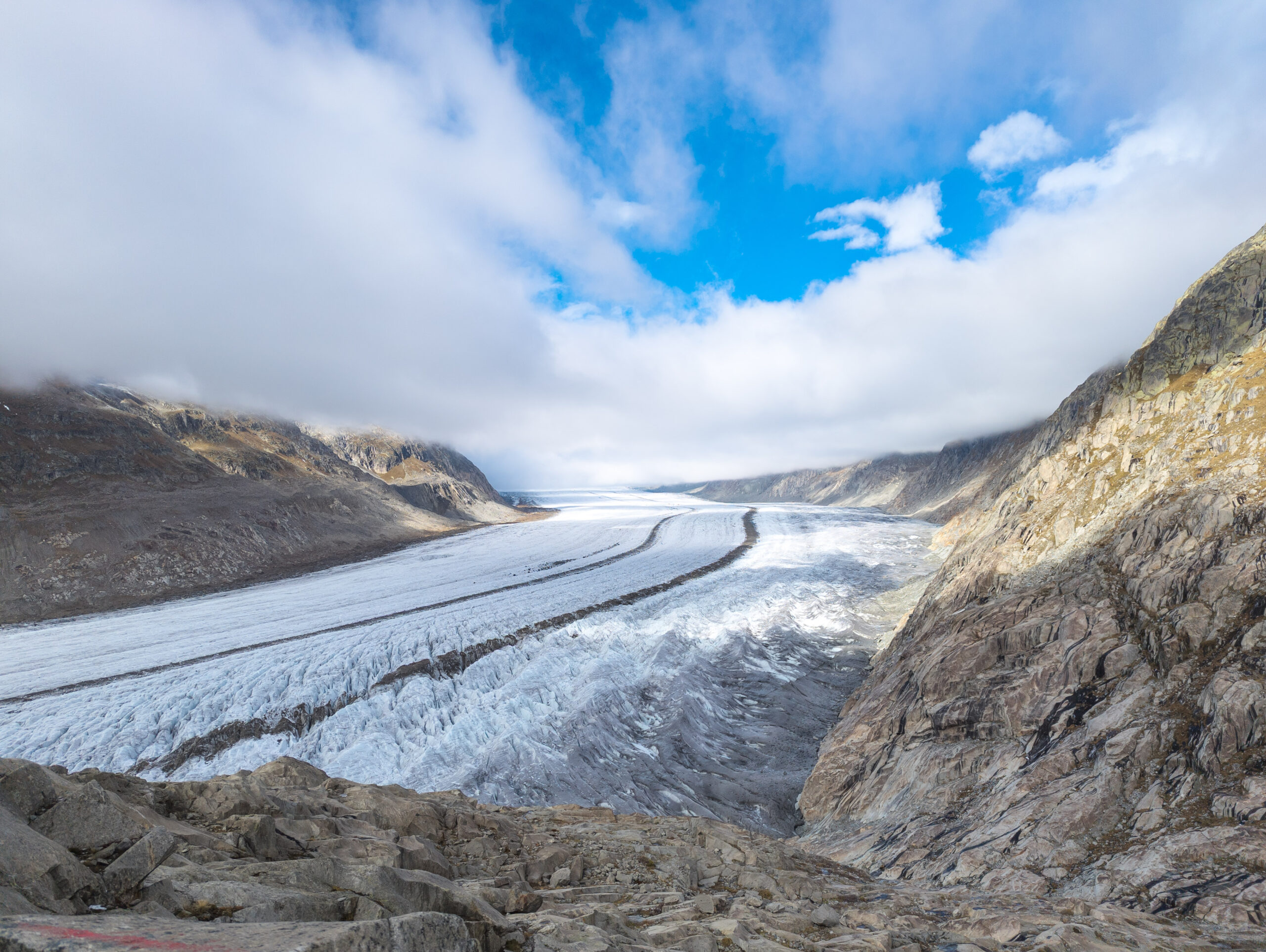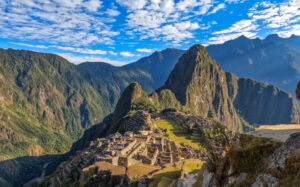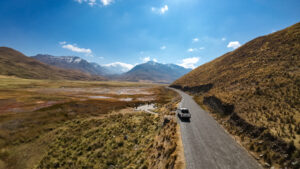How a rest stop detour, a free castle day, and a race against the clock turned a weekend trip into a perfect alpine getaway.
I woke up that Sunday, 5 October, at 4:30 AM—too early, since I hadn’t slept well after the Saturday hunting day. But in that early morning stillness, I felt an impulse for the road. I packed my gear, layered up, and gathered all the things I’d need. By 6:30, I was in the car, heading toward Bern to pick up a friend. From there our road trip into the heart of Valais began—a journey that would be shaped by historic ruins, unexpected turns, a glacier tunnel, and a jacuzzi.
What follows is how the weekend unfurled, and the threads that wove it together: history and landscape, culture and solitude, and that quiet tension between the initial idea and what we actually discovered.
Morning: A Detour and a New Destination
We were originally aiming for Martigny to visit some historic points I’d read about. But a stop at an Autobahn rest area changed our course. At the information point, the woman behind the desk didn’t speak of Martigny with much enthusiasm—”not very nice,” she said—and had no clue about the Aletsch Arena tunnel hike when I asked.
Instead, she mentioned the Safran hike near Mund, where saffron is still cultivated by hand. It sounded interesting—golden fields, rare spice, Swiss mountain charm—but we didn’t have time to explore it. So we tucked that idea away for another day and decided to skip Martigny.
Instead of pushing on toward Martigny, we turned toward Sion, Leuk, and eventually the Aletsch area.
Midday in Sion: Free Castles, Ancient Glass, and Layered History
By midmorning, we were in Sion, the capital of Valais, and immediately realized our timing was perfect. That Sunday was “Schlössertag” (Castle & Fortress Day) in Switzerland, a day of free admission—essentially a medieval holiday for budget travelers.
Our first stop was Tourbillon Castle. Perched dramatically on its hill, its ruins are a powerful sight. Built between 1297 and 1308 under Bishop Boniface de Challant, it was once a symbol of the Prince-Bishops’ authority. Over the centuries, it suffered its share of misfortune, most notably the fire of 1788 that left it in its current skeletal but striking state.
At 11:00, we joined a guided tour at Tourbillon Castle, which had an focus on glass. Not the kind you drink from, but the kind that once kept the wind (and occasionally arrows) out of medieval rooms. The guide explained how glass craftsmanship developed in Valais, from rough, hand-blown bottles to the stained panes that eventually illuminated churches and noble halls. A local artisan was even demonstrating the old techniques, transforming glowing blobs of molten glass into delicate bottles.
After the glass tour, we visited the Valère Basilica, a fortified church complex that feels part monastery, part fortress. Inside sits one of the world’s oldest playable organs, with parts dating back to the 1430s—a reminder that music, faith, and history can survive even the toughest centuries.
We also visited the Musée d’Histoire du Valais, located right next to the basilica within the old Valeria Castle. A museum, connecting prehistory, medieval life, and ecclesiastical heritage under one roof. Among its treasures are Roman artifacts, bishopric relics, and centuries-old objects that show how Valais balanced faith, power, and survival in an Alpine crossroads.
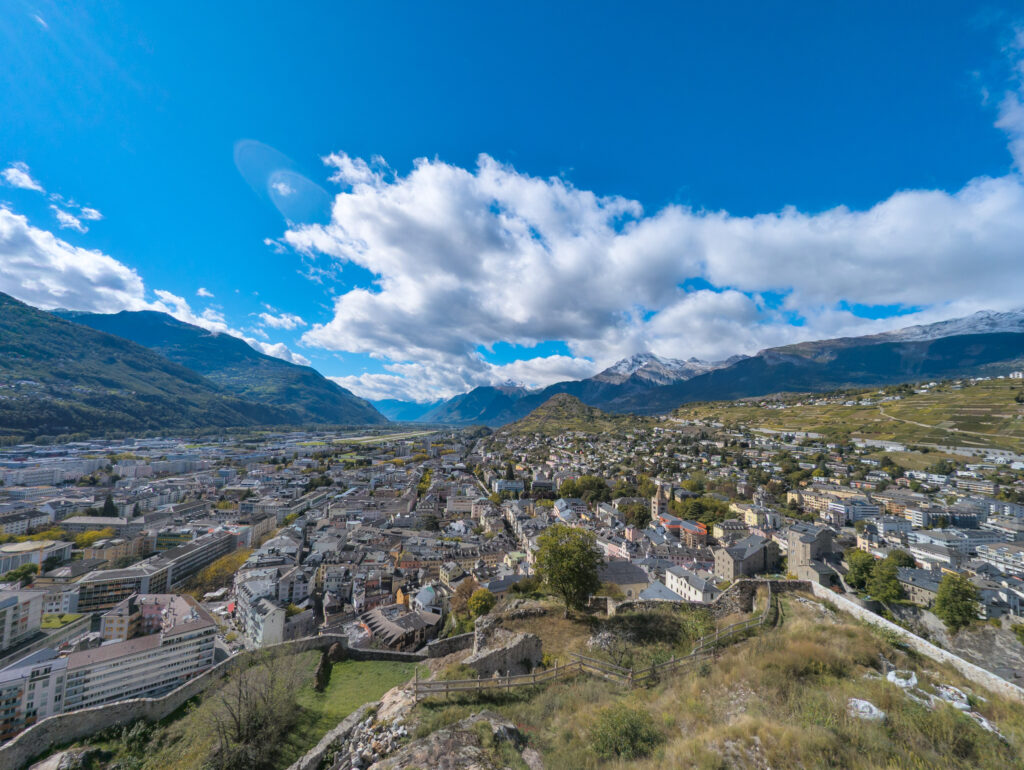
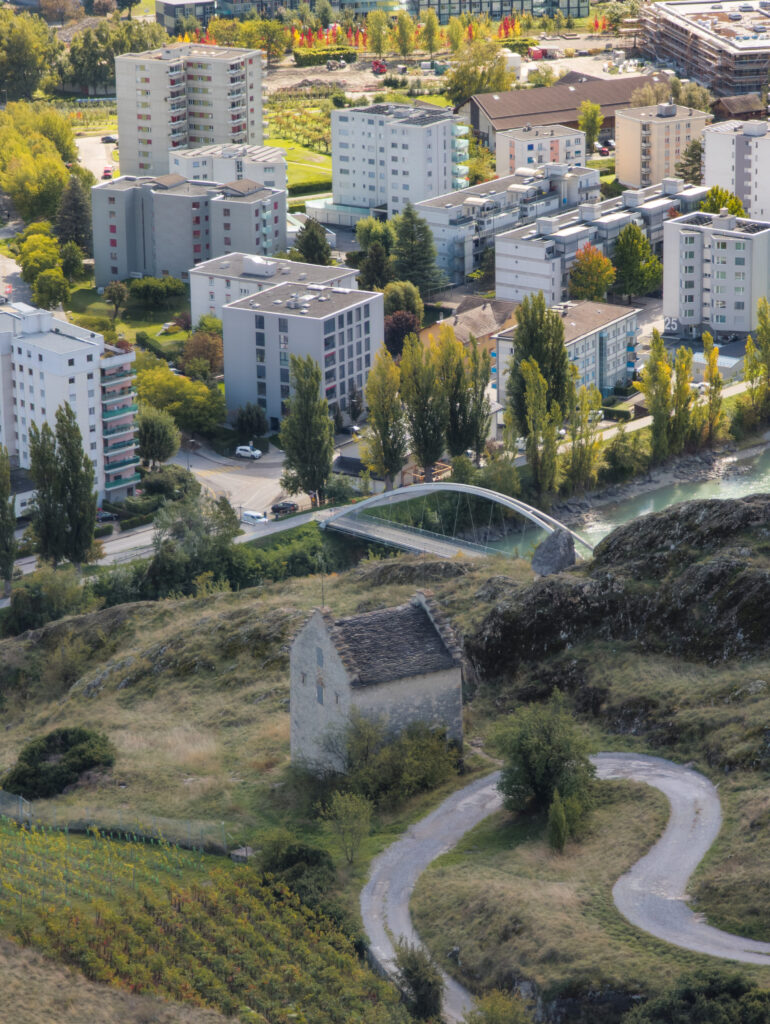
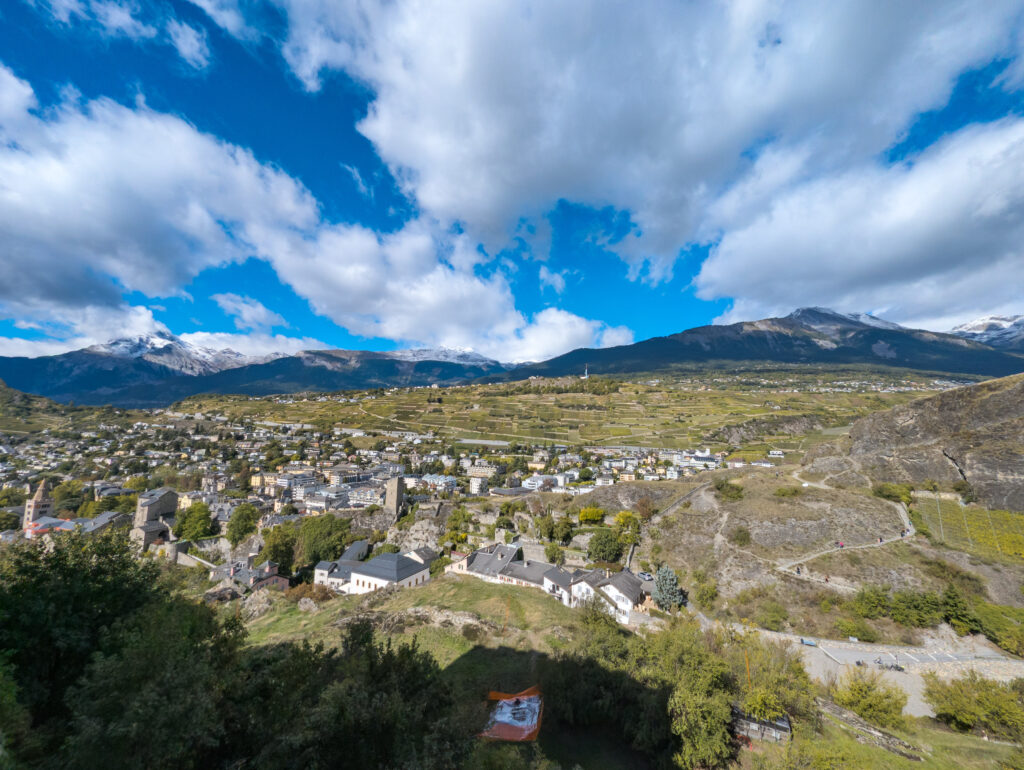
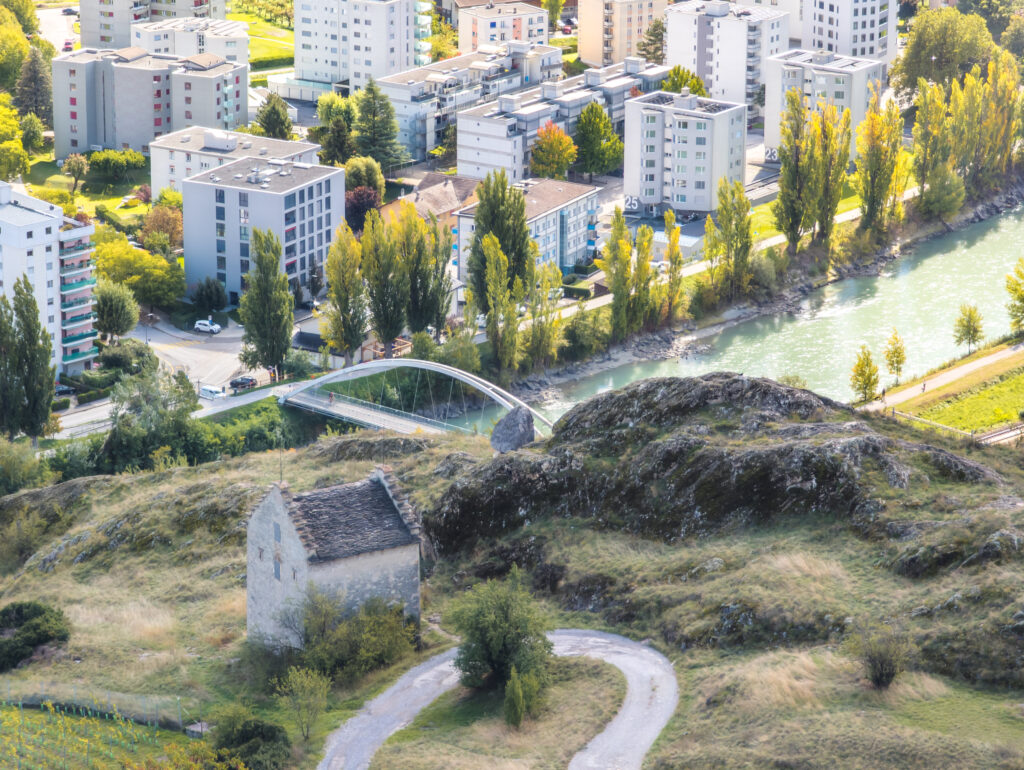
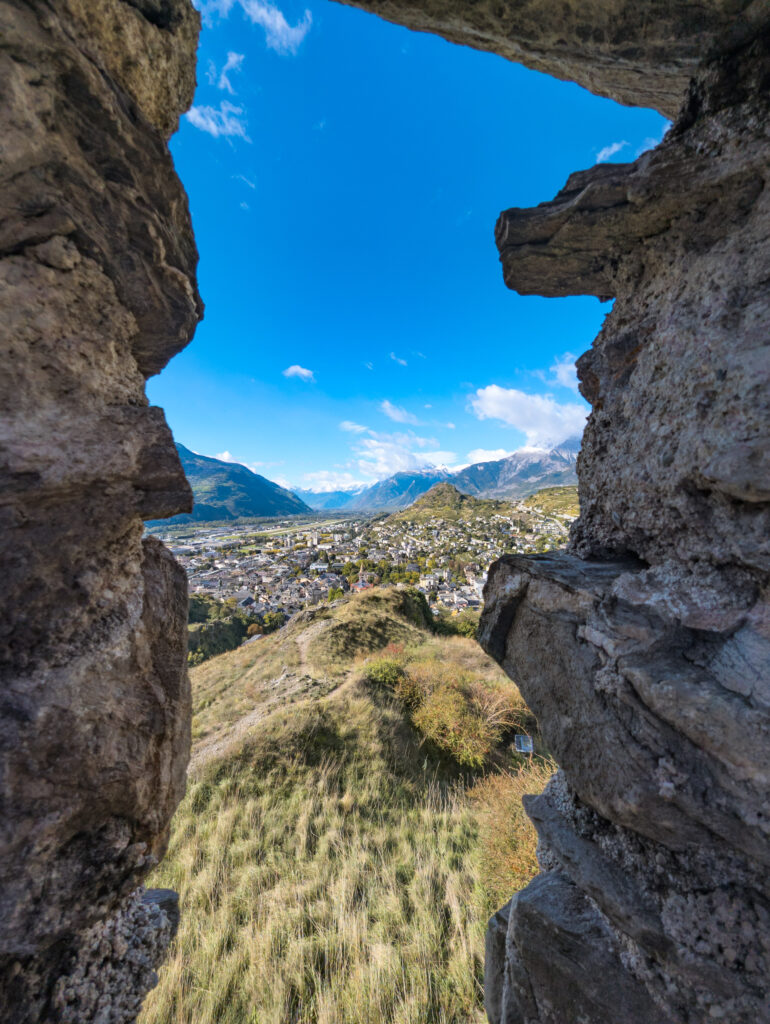
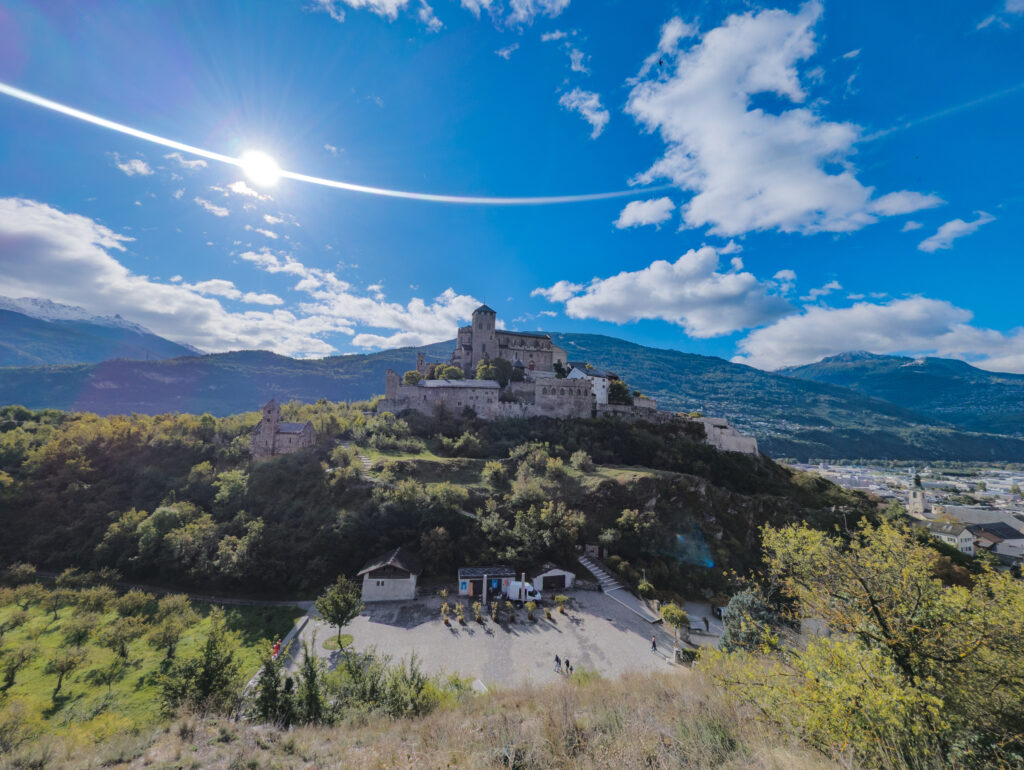
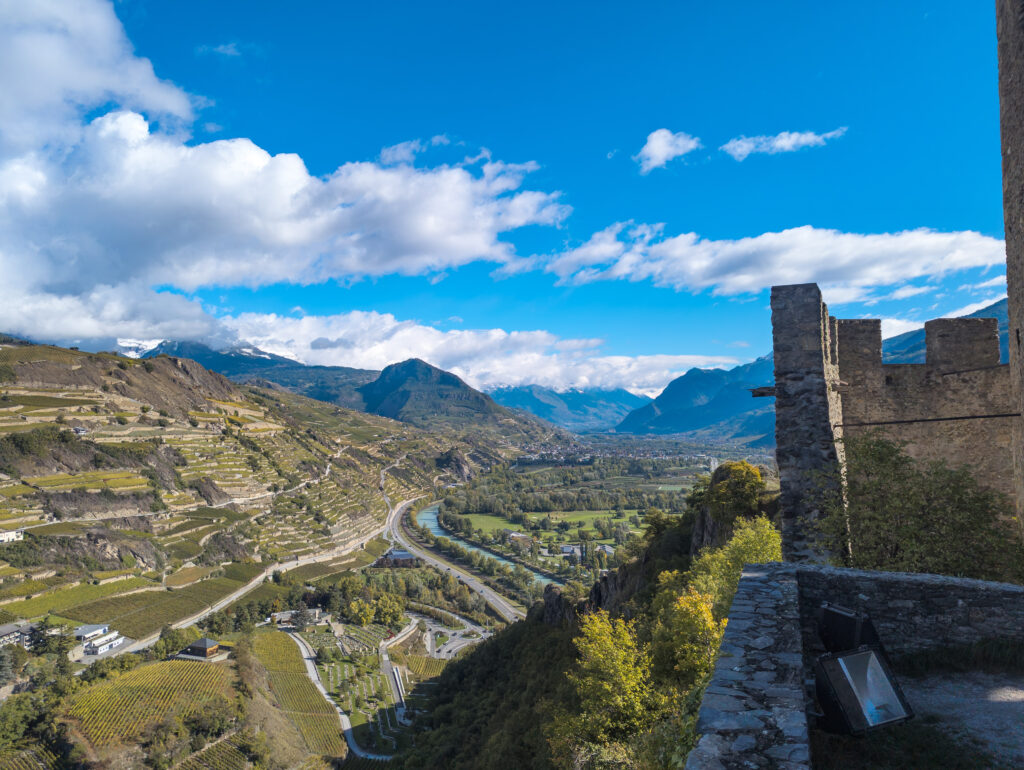
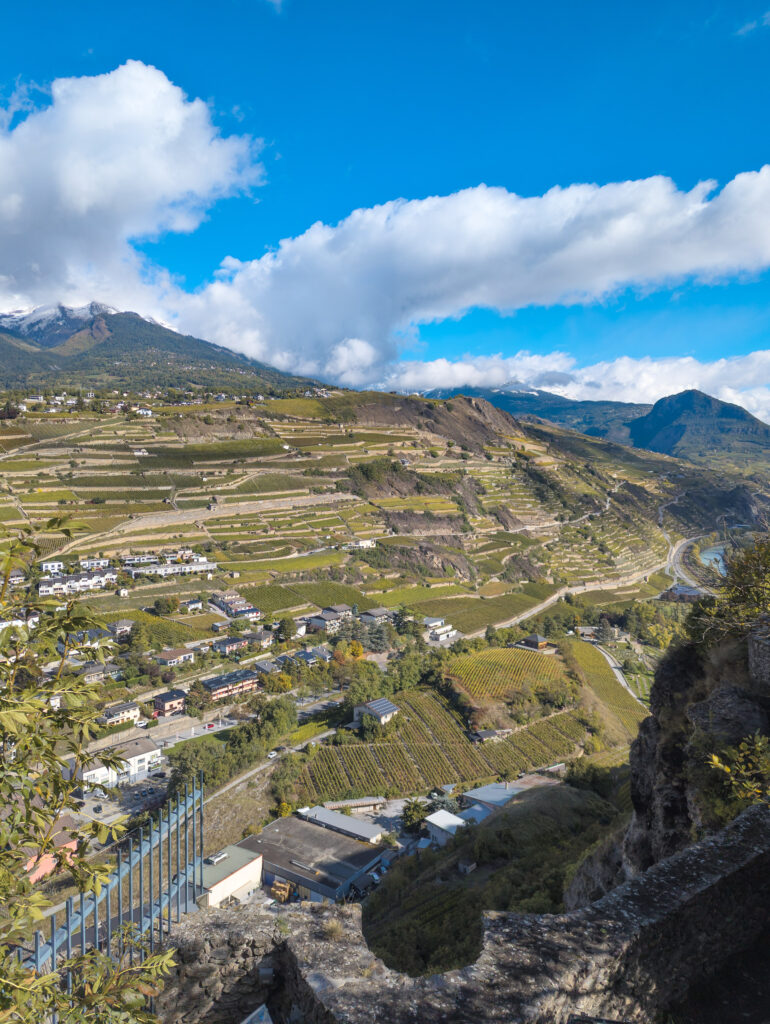
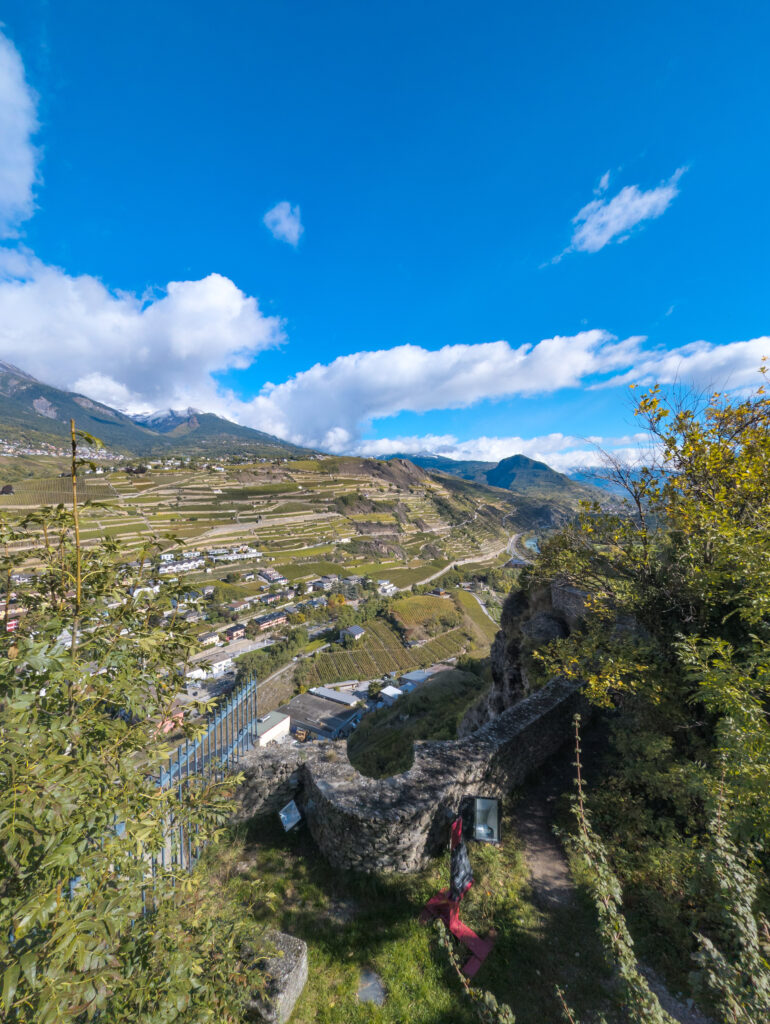
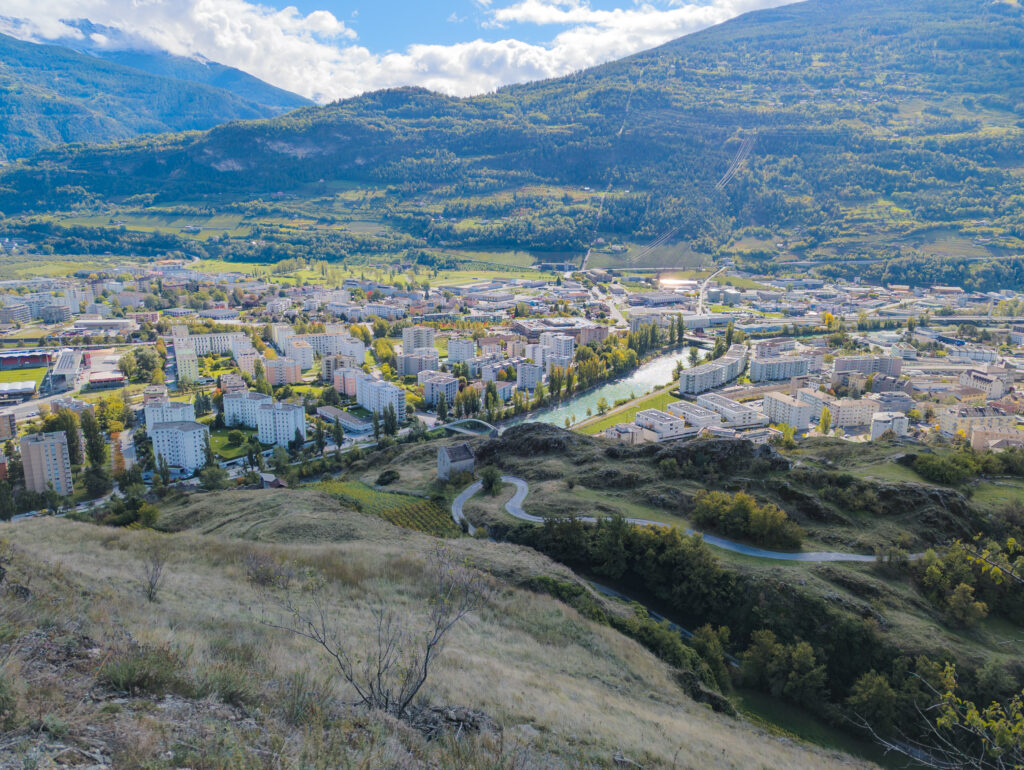
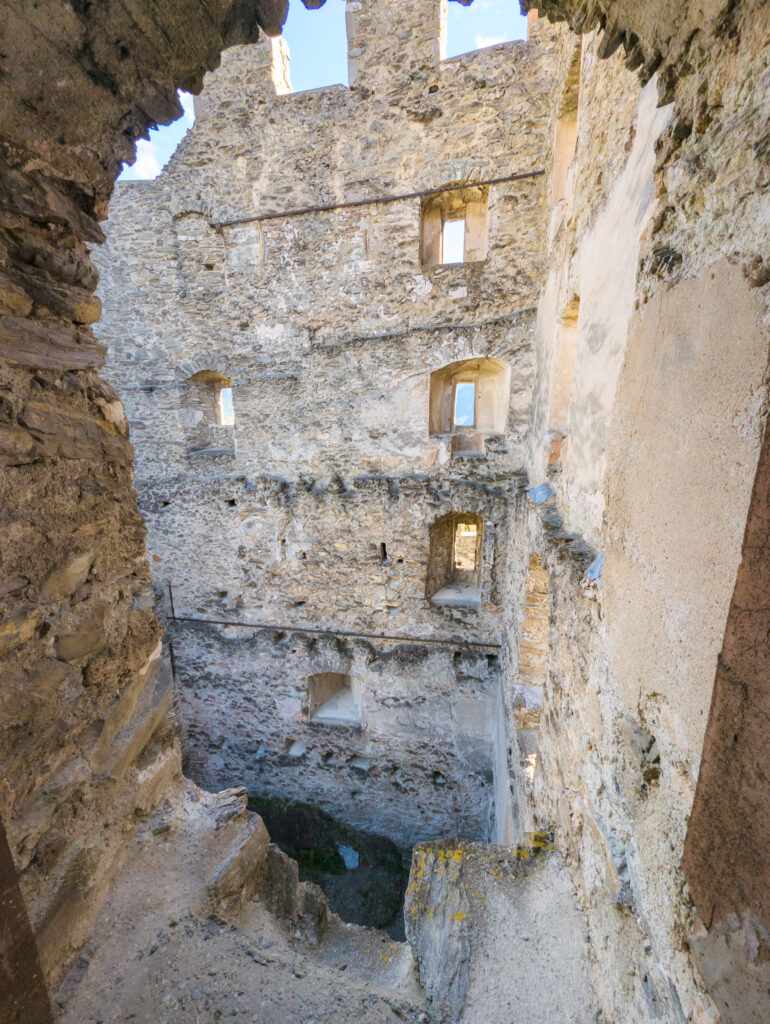
Afternoon: Sion, Castles, and the Subterranean Lake
After our castle explorations in Sion, we headed to Saint-Léonard to visit the Saint-Léonard Underground Lake (Lac Souterrain de Saint-Léonard), the largest natural navigable underground lake in Europe. Discovered in 1943 by speleologist Jean-Jacques Pittard, the lake was opened to the public in 1949 and has since become a must-see attraction in the Valais region.
The lake stretches 300 meters in length and lies between 30 and 70 meters below the surface, nestled beneath the vineyards. Visitors embark on a serene boat tour through the illuminated gypsum cave, guided in multiple languages, including Italian, French, and German.
Although reservations are recommended, we arrived without one and were fortunate to secure a spot on the next available tour. The experience was tranquil and mesmerizing, offering a unique perspective of the region’s natural beauty.
From Saint-Léonard, we drove east toward Leuk, where we found another castle—this one with a modern twist. Château de Leuk has a futuristic glass dome perched atop its medieval structure, giving the impression that history just got a stylish renovation. From the terrace, the view over the Rhône Valley is nothing short of spectacular: vineyards cascading down the slopes, the river snaking through the valley, and the distant peaks holding the horizon.
But the clock was ticking. Our hotel’s jacuzzi reservation in Chäserstatt was set for 6:00 PM, perfectly timed for sunset. So after soaking in the view (metaphorically), we jumped back into the car and headed into the mountains for a more literal soak.
The Berghotel Chäserstatt sits at 1777 meters above Ernen, high on a sunny plateau with a panoramic view that looks almost too good to be real. It’s quiet, remote, and incredibly welcoming. The receptionist smiled and told us, “You’re the only guests tonight.” That’s not just hospitality—that’s VIP treatment. For CHF 91, it felt like we’d rented our own private mountain.
We made it to the jacuzzi just in time. The water was warm, the air crisp. That night, sleep afterwards came easy.
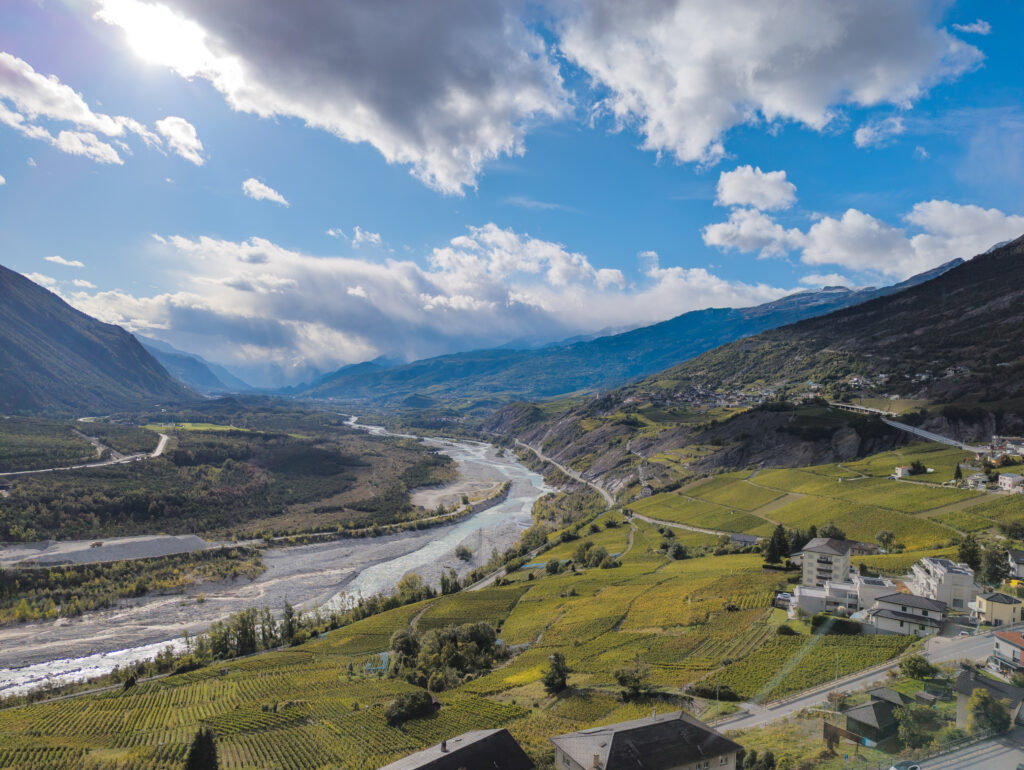
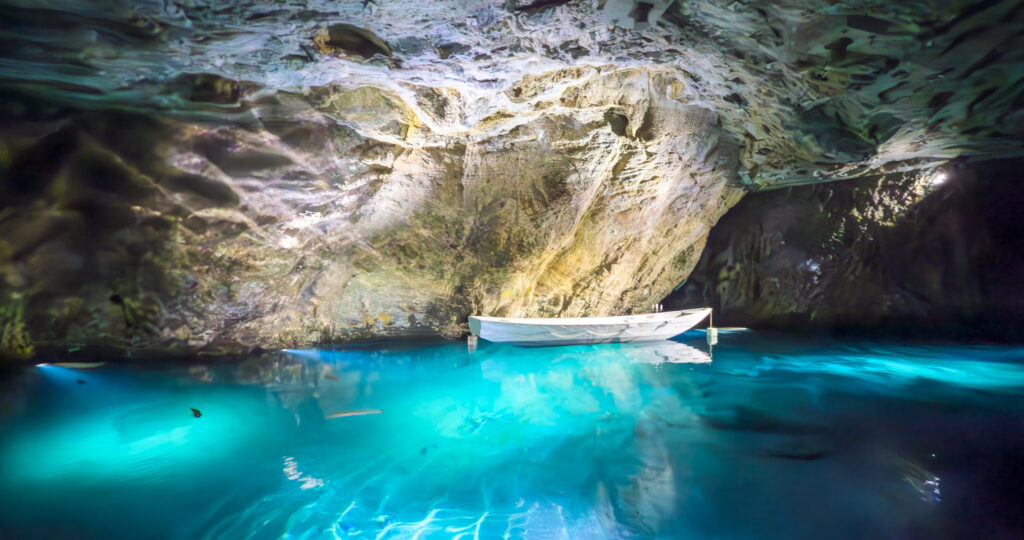
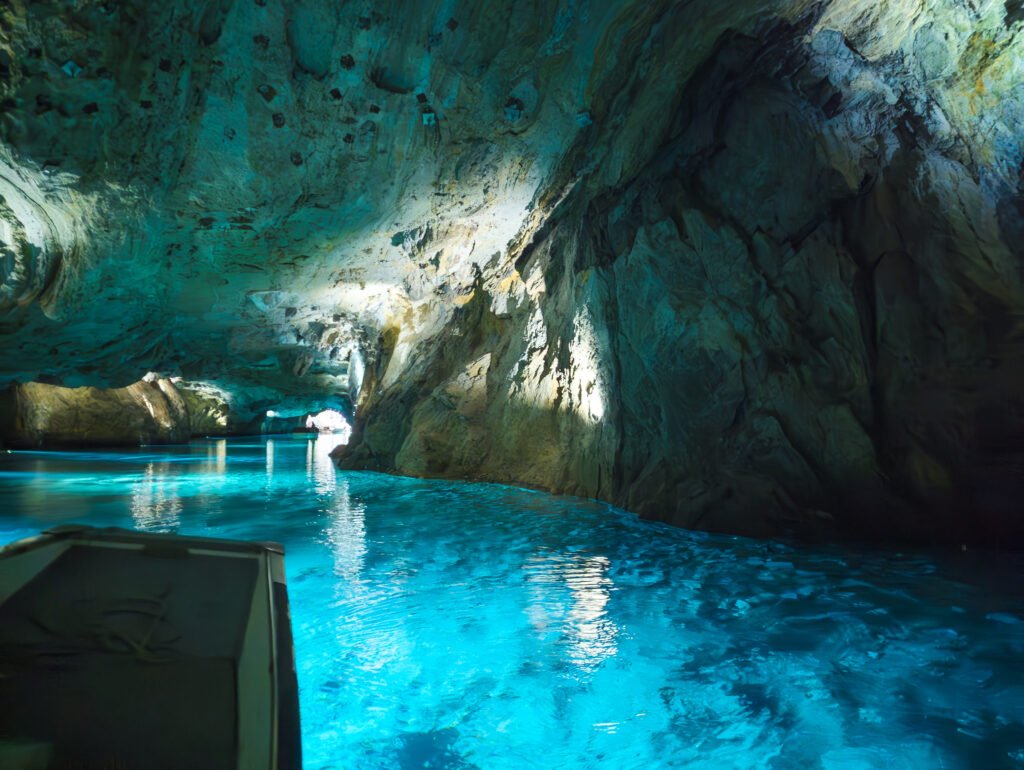
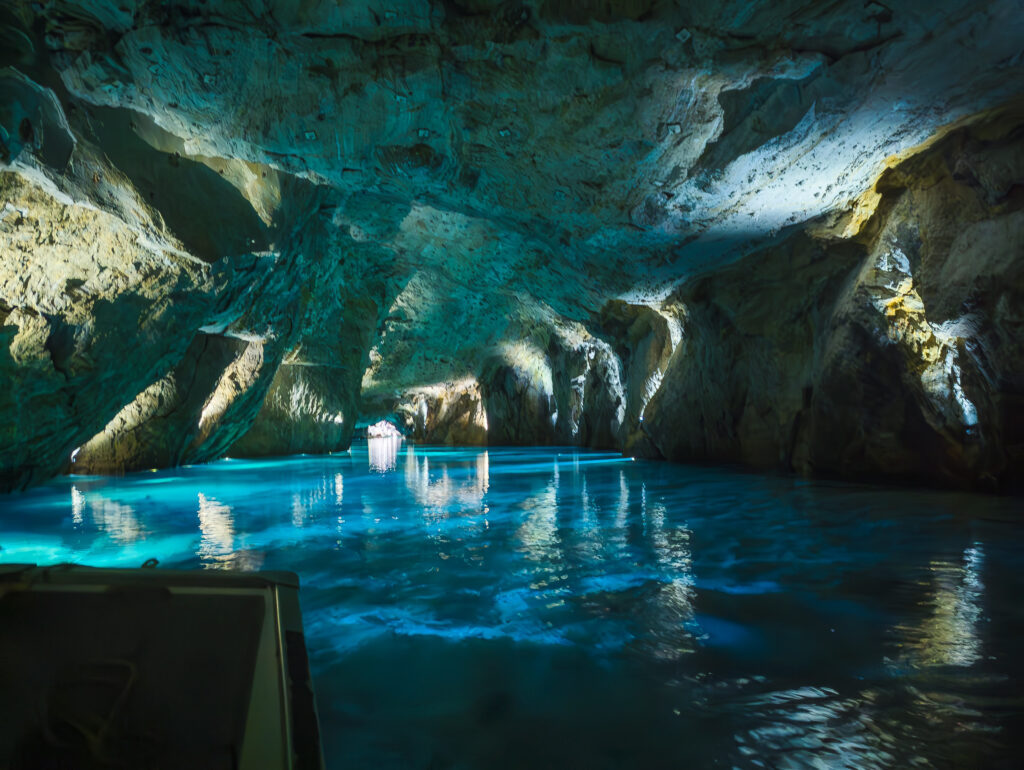
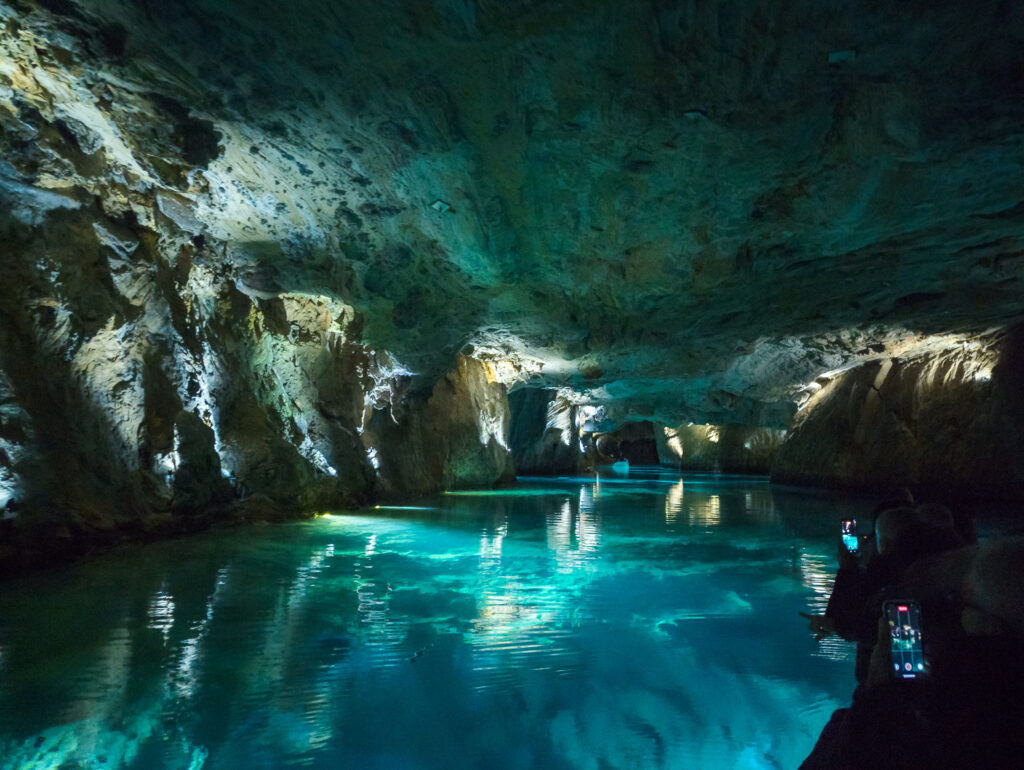
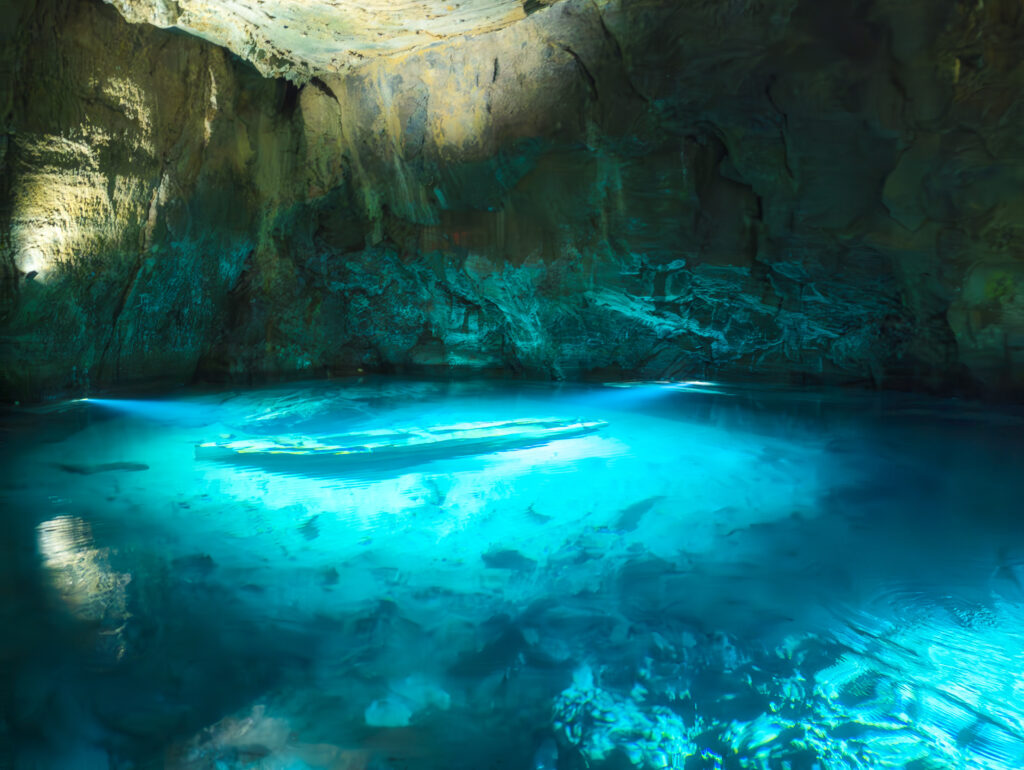
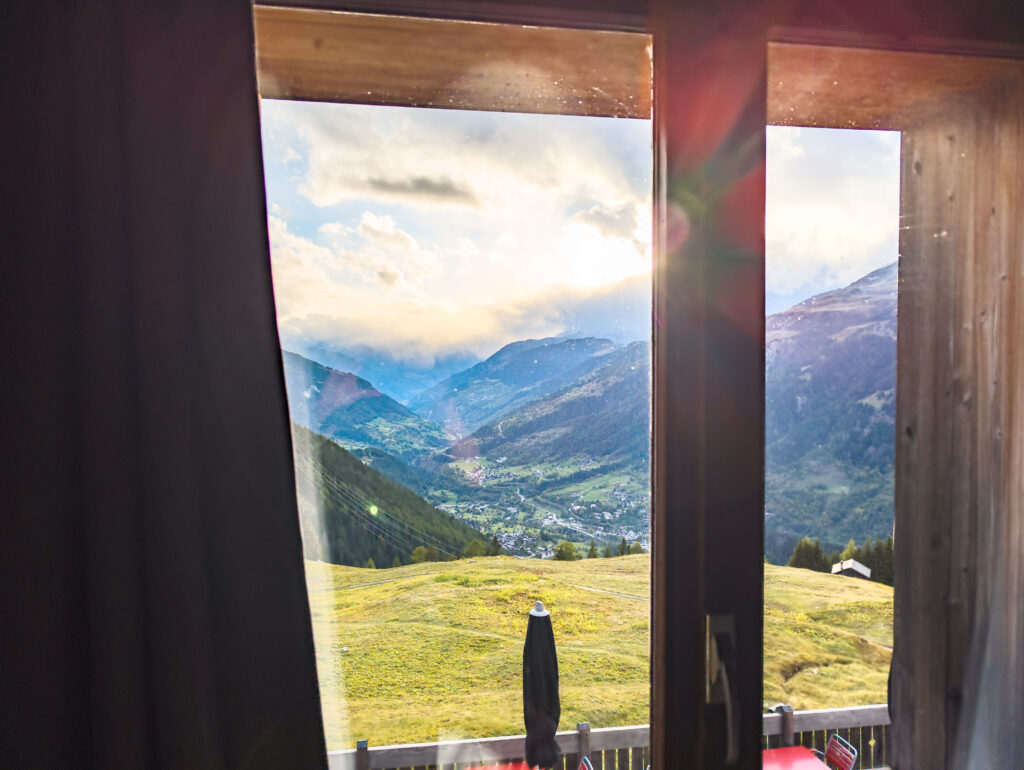
Day Two: Mountains, Fog, and the Tälligrattunnel
The next morning brought bright skies—perfect hiking weather. We set out for the Aletsch Arena, starting from Fiesch. The cable car took us up toward the Eggishorn, and we began hiking from the middle station.
At first, we were walking inside a cloud—fog everywhere, sound dampened, the ground glistening with frost. It felt like stepping into a dream sequence. Then, without warning, the fog lifted, revealing the Great Aletsch Glacier in all its frozen glory: a massive, slow-moving river of ice that has shaped these mountains for millennia.
Our route led us to the Tälligrattunnel, a piece of 19th-century engineering that feels like a time capsule. Built in 1895–1896 to drain the Märjelensee, a glacial lake that used to threaten the Fieschertal valley with floods, it was an impressive solution that ended up being used only once. Walking through its dark, chilly passage today is a hauntingly beautiful experience—a literal tunnel through both mountain and history.
We finished the loop in about four hours, following a clockwise route (glacier first, tunnel after), and stopped on the trail for a simple snack with an incredible view.
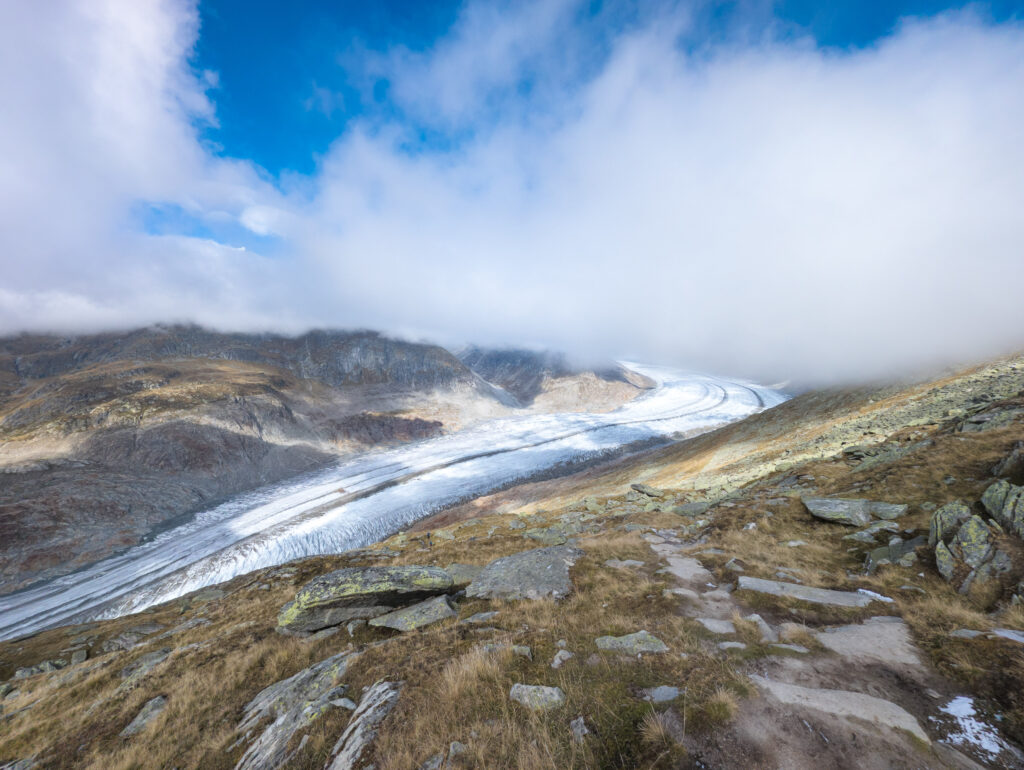
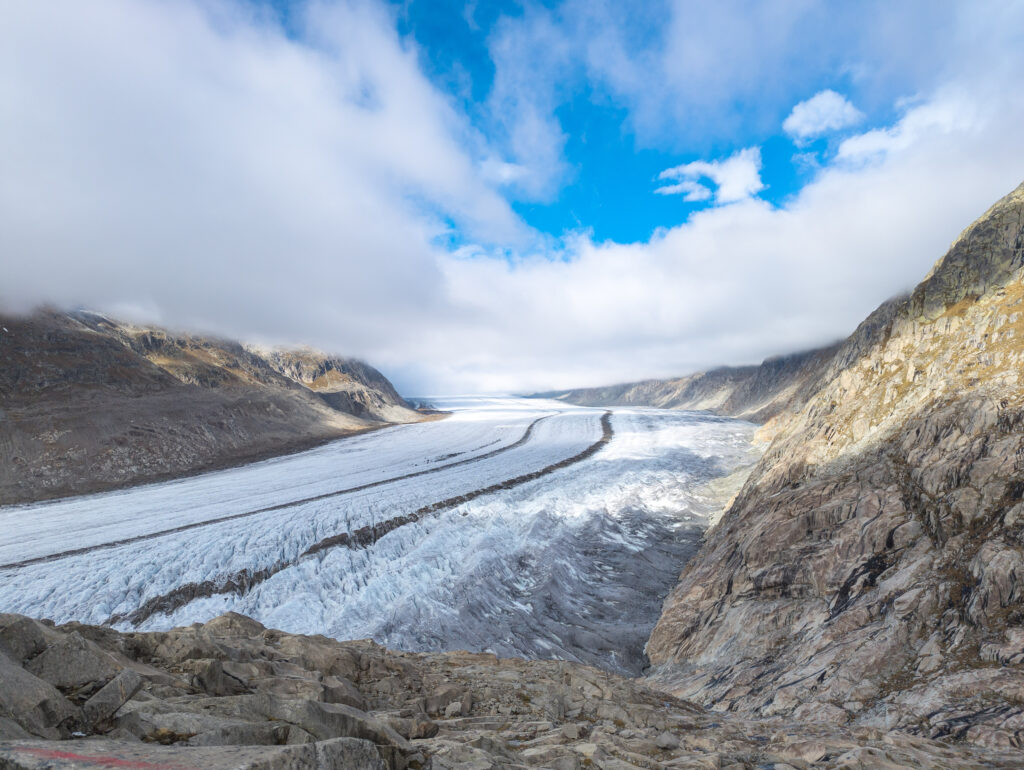
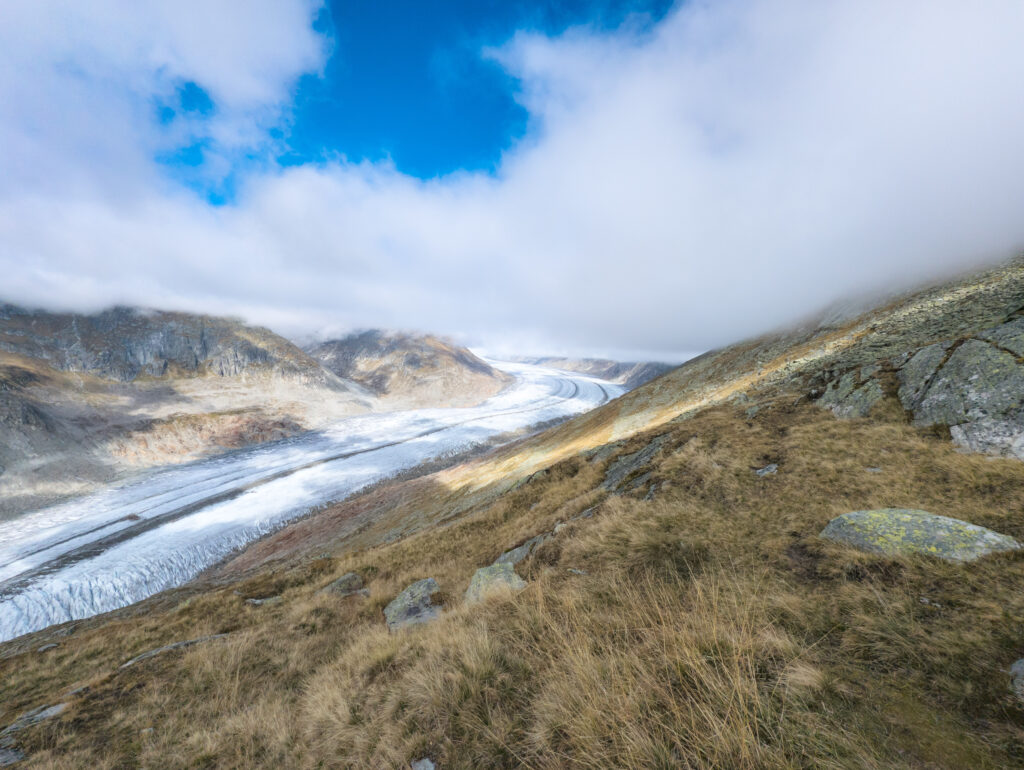
Return via Furka: Driving as Adventure
Back in Fiesch, my friend caught a train to Interlaken while I drove home over the Furka Pass. Normally it’s full of motorbikes, cyclists, and slow campervans, but that day it was eerily empty. Later I learned the pass had been closed earlier that morning—no wonder it felt like my own private racetrack.
The drive was pure joy: switchbacks, snow patches, crisp mountain air, and the occasional confused marmot watching from the roadside. I even beat the GPS’s estimated arrival time by fifteen minutes—proof that sometimes enthusiasm trumps algorithms.
By the time I reached home, it all felt dreamlike. A spontaneous detour, a free castle day, a tunnel built to tame a glacier that still glows in my mind.
